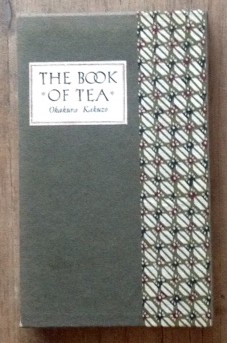Inspiring Older Readers
 posted on 19 Feb 2017
posted on 19 Feb 2017
The Book of Tea by Okakura Kakuzo
When I was a child in the late 1950s and early 1960s one of the few things we thought we knew about the mysterious East was the Japanese tea ceremony – always depicted as a ritual carried out by delicate, pale women in beautiful kimonos in minimal wooden houses with paper walls. All of this seemed in some way to embody the inscrutable mysteries of a world so very alien to our own. In retrospect, of course, we knew nothing of the cultural significance of tea to the Japanese and the depictions we saw on film and television at that time were so often just grotesque caricatures of reality.

As time has gone by I have grown to love so much Japanese art, cinema and literature and I often feel slightly ashamed at how deeply rooted these terrible stereotypes still lie buried inside me. So when I came across this copy of Okakura Kakuzo’s The Book of Tea originally published in 1906 I was absolutely thrilled to discover that it had been reprinted in 1956 in this faithful and elegant edition by the US publisher Charles Tuttle.

This really is a beautiful book – not colourful and flashy but understated and delicate, on a fine textured paper with atmospheric black and white pen-wash illustrations. The book comes in an olive green card slipcase with a decorative band on the right edge and a title and author label in black and red. Sliding the book from the slipcase you’ll find a full front patterned design that echoes the band on the outer cover. There is a promotional band wrapped around the book that explains the content and carries the price.
The promotional band tells us:
The title is deceptive. It is neither simply a study of tea nor yet an esoteric study of Japan’s tea cult. Rather it is a magnificent attempt to make understandable, through the tea cult, the essence of Japanese culture.
The book is almost pocket-sized and is delightfully easy to handle and read with quite a large almost bold font for the body of the text. A new foreword by Ellise Grilli has been added to this 1956 edition – which I’m not sure was necessary or adds too much – but there is a very useful and informative note on the illustrations that have been used and which are not necessarily contemporaneous with the text.

This is a really exquisite little book and could take its place alongside any piece of Japanese art you might mention and do so without needing to apologise. You can find plenty of reprints of the text for very little but to get one of these 1956 editions you might have to pay in excess of £30. Expensive I know but really worth the investment.
Terry Potter
February 2017

